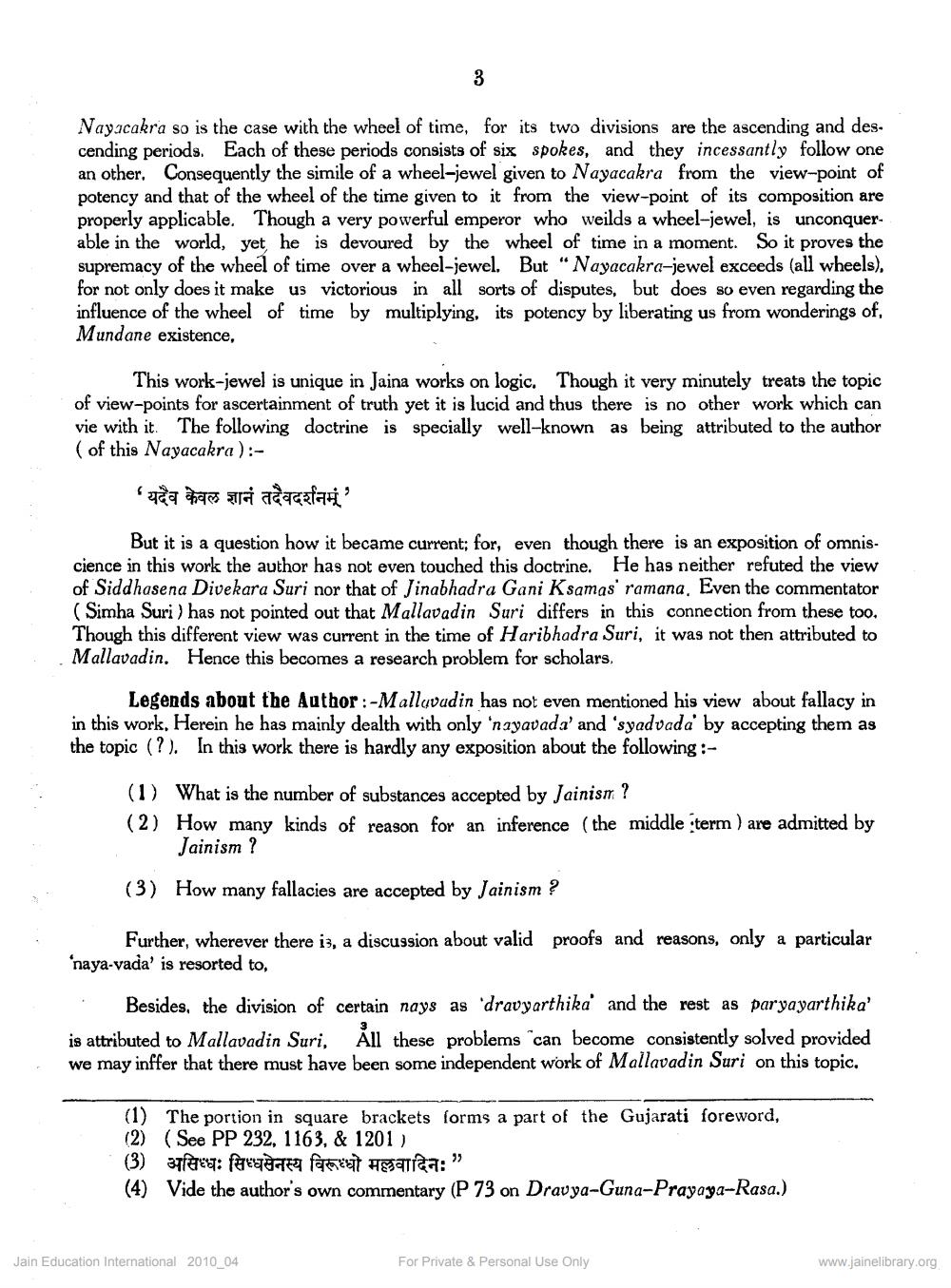________________
Nayacakra so is the case with the wheel of time, for its two divisions are the ascending and des. cending periods. Each of these periods consists of six spokes, and they incessantly follow one an other. Consequently the simile of a wheel-jewel given to Nayacakra from the view-point of potency and that of the wheel of the time given to it from the view-point of its composition are properly applicable. Though a very powerful emperor who weilds a wheel-jewel, is unconquerable in the world, yet he is devoured by the wheel of time in a moment. So it proves the supremacy of the wheel of time over a wheel-jewel. But “Nayacakra-jewel exceeds (all wheels), for not only does it make us victorious in all sorts of disputes, but does so even regarding the influence of the wheel of time by multiplying, its potency by liberating us from wonderings of, Mundane existence,
This work-jewel is unique in Jaina works on logic. Though it very minutely treats the topic of view-points for ascertainment of truth yet it is lucid and thus there is no other work which can vie with it. The following doctrine is specially well-known as being attributed to the author ( of this Nayacakra):
__ 'यदैव केवल ज्ञानं तदैवदर्शन'
But it is a question how it became current; for, even though there is an exposition of omniscience in this work the author has not even touched this doctrine. He has neither refuted the view of Siddhasena Divekara Suri nor that of Jinabhadra Gani Ksamas' ramana. Even the commentator (Simha Suri) has not pointed out that Mallavadin Suri differs in this connection from these too. Though this different view was current in the time of Haribhadra Suri, it was not then attributed to Mallavadin. Hence this becomes a research problem for scholars,
Legends about the Author :-Malluvadin has not even mentioned his view about fallacy in in this work. Herein he has mainly dealth with only 'nayavada' and 'syadvada' by accepting them as the topic (?). In this work there is hardly any exposition about the following :
(1) What is the number of substances accepted by Jainism ? (2) How many kinds of reason for an inference (the middle term ) are admitted by
Jainism ? (3) How many fallacies are accepted by Jainism ?
proofs and reasons, only a particular
Further, wherever there is, a discussion about valid 'naya-vada' is resorted to,
Besides, the division of certain nays as 'dravyarthika' and the rest as paryayarthika' is attributed to Mallavadin Suri. All these problems can become consistently solved provided we may inffer that there must have been some independent work of Mallavadin Suri on this topic.
(1) The portion in square brackets forms a part of the Gujarati foreword, (2) (See PP 232, 1163, & 1201) (3) 3Tfa: fuere fara at gatea:" (4) Vide the author's own commentary (P 73 on Dravya-Guna-Prayaya-Rasa.)
Jain Education International 2010_04
For Private & Personal Use Only
www.jainelibrary.org




